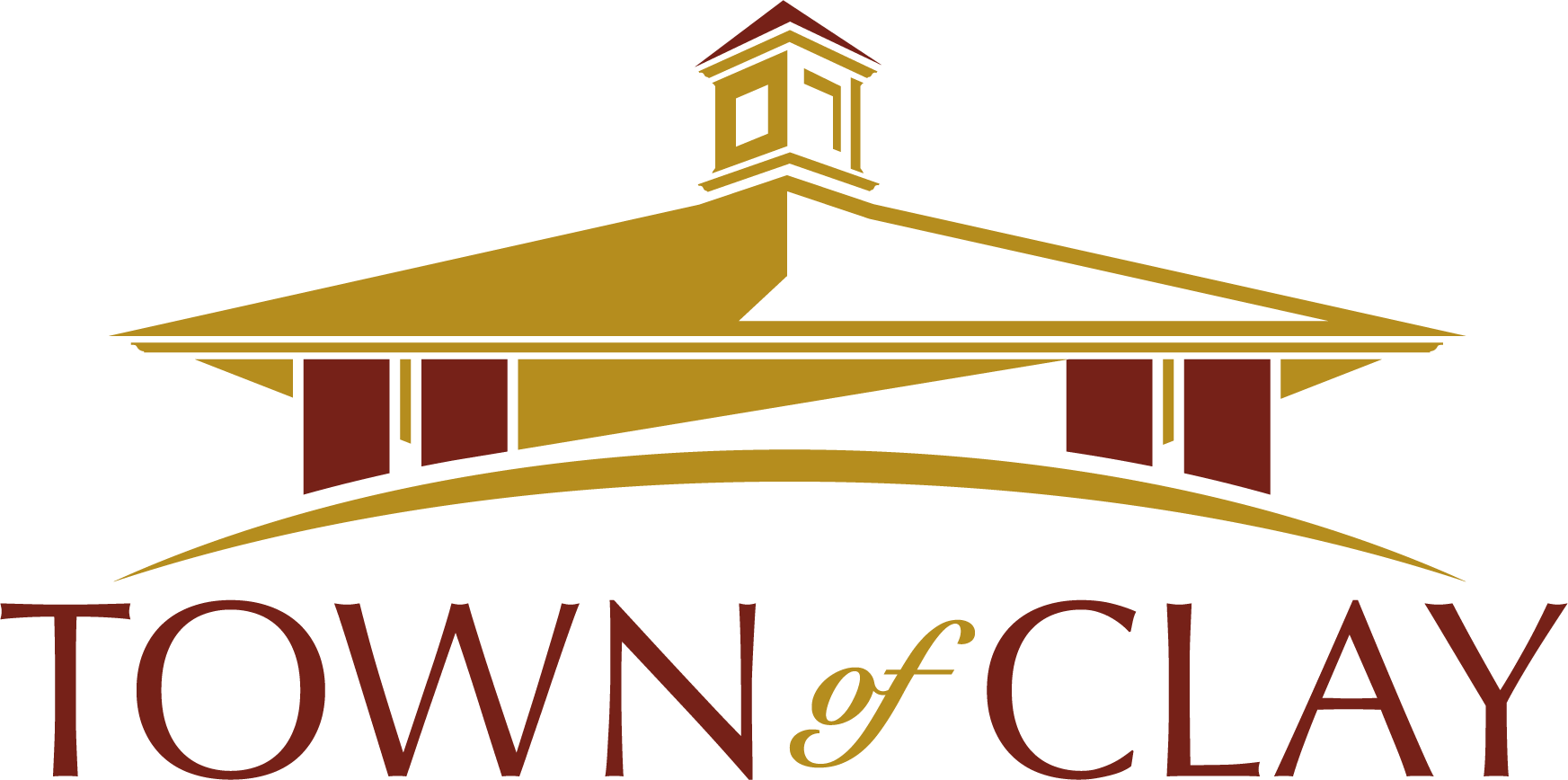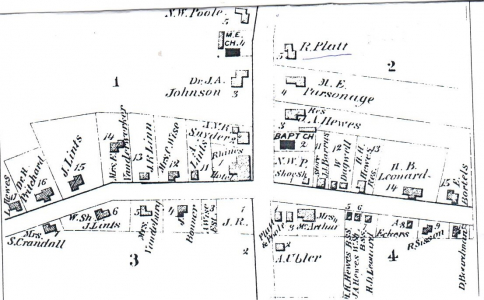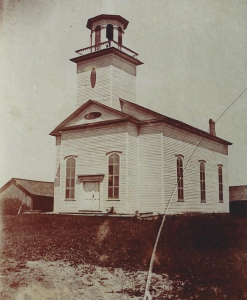Clay Archaeological DigsPosted on May 20, 2021 |
Image
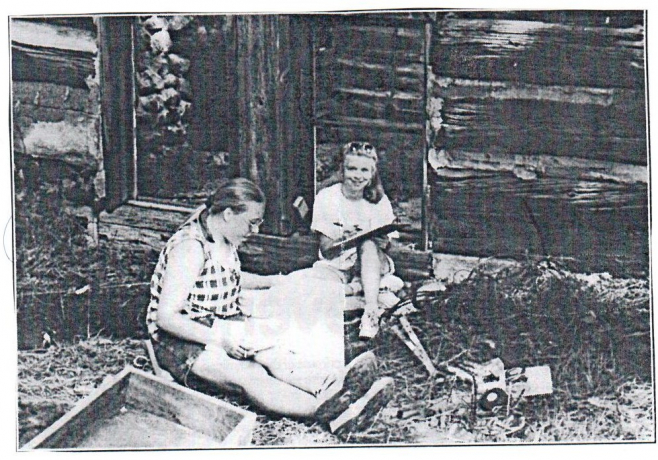
|
HISTORY MYSTERY: Clay Archaeological Digs
Pictured are Jessica Bicko, left and Cassie Hough participants in the second dig at the original location of the old Clay Hamlin log cabin on Henry Clay Blvd. They are recording their activities after having dug in one of the six test pits in the twenty-meter square grid that had previously been surveyed. The test pits had further been divided into six sub regions. They used trowels to carefully remove the soil. The girls then sifted through the layers of earth in search of historical treasures that might otherwise have been missed.
What was the motivation for this event backed by the Clay Historical Association? The log cabin was used for these celebrations: The Bicentennial of the country in 1776, The Town’s sesquicentennial in 1977 and the Town’s 150th birthday in 2002. Since then, it was empty. Assistant Town Supervisor, Dave Palmer, and I tried to convince the Town to preserve it before it was too late. The owner, Bob Hamlin, donated it to the town for the recently developed Clay Historic Park with the agreement it would be moved there. Don Thompson, CHA President and 9th grade Global Studies teacher, applied for a New York State Archaeological grant to excavate the land surrounding the cabin. Assemblyman Michael Bragman’s office obtained a grant to cover the cost of tools, materials, and displays.
Don Thompson states: “The first archaeological field school was held at the log cabin site July 13 – July 26, 1996. That year a total of 31 volunteers took part in the two-week long dig. After being introduced to the techniques to be used, the volunteers worked in pairs to extract artifacts from each test pit. It was extremely rewarding to see the effort and dedication of the volunteers, aged 10 through 80. They represented a broad spectrum: teachers, students from ES-M, CNS and Liverpool, members of churches, Clay Historical Association members, and Boy Scouts.” The levels of the pits were measured in ten centimeter intervals. Expecting to only find evidence of the early pioneers, they were surprised to find three different kinds of projectile points including a Jack’s Reef corner notched point dating from the Early Woodland period of 600-800 A.D. Also an Aden Projectile made from Ohio Chalcedony indicating the vast trading network among early Native Americans.
After Completion of this dig, in the fall, some members of a North Syracuse-Liverpool area Girl Scout troop and several adult volunteers met for four Saturdays at the home of well-known local avocational archaeologists Gordon and Barb DeAngelo, who generously lent their expertise and extensive library to the task of identifying and cataloging the artifacts. I was overwhelmed at the magnitude of the historical books and other sources of information and the extensive knowledge of the couple. They also agreed to resurvey the site for the next dig next year and instructed Don in finding landmarks for future digs.
The second dig, as shown in the photo, took place July 14 – 18, 1997 and was similar to the first, although the time segment was shorter because the cabin had not been removed from the site as hoped. Again there was a good response of 31 volunteers ranging in age from youngsters to senior citizens. Robert Hamlin, the donator of the cabin, offered suggestions for dig sites, especially the location of the privy and granted permission for a third dig the next year after the Clay Highway Department removed the cabin. Among other artifacts many types of clay pipes were found: early English of 1600’s to smaller bored stems from the Murray Pipe firm of England and an entire bowl decorated with a spread eagle grasping wheat and spears.
In every test pit during both dig seasons, ceramic shards of white earthenware and various stoneware were found. Earthenware made from natural glacial clay, was used for food preparation and storage. Stoneware was more stable having been fired twice and an enamel glaze infused, sometimes with a blue decal design. Other finds were: shoe button hook. china doll’s head, child’s thimble (I found this), metal fork, all types of bullet shells, heart-shaped padlock, small round copper makeup container, head of an iron hoe, a purple-stone brooch, and many more which are on display at the Railroad Station Museum in the Clay Historic Park on Route 31.
Don Thompson sums up the first two digs as follows: “What have our archaeological excavations told us so far? The discovery of chert flakes, and the remains of a slate pendant illustrate that the surrounding area of the Clay Marsh were a favorite hunting ground for Native Americans for hundreds of years before the arrival of European settlers. The ceramic shards and glass fragments used for food preparation and storage, small person items like jewelry, pipe stems, or a pocket knife give a glimpse of the families who lived in the cabin. Items such as a hoe and muskrat trap bear witness to the ways early settlers obtained food or earned money. The huge quantity of spent shells indicate the long range usage of the Cabin as a sportsmen’s recreational getaway. All of this added together portrays the cabin’s two hundred year plus history, one that changed as the times and people’s way of life changed.”
Dorothy Heller, Historian
5-20-21
Other
History Mysteries
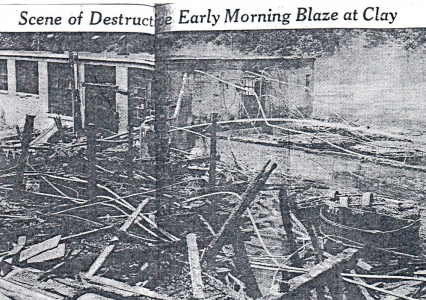
Clay Early Morning Blaze
History Mystery | Oct 1, 2021
HISTORY MYSTERY: Clay Early Morning Blaze
Clay History Camp 2012
History Mystery | Jul 9, 2012
The week of July 9, 2012, seven girls and seven boys from around town made some wonderful memories, Under the direction of Cindy Redhead, chairman of this year’s History Camp, and nine volunteers and helper
